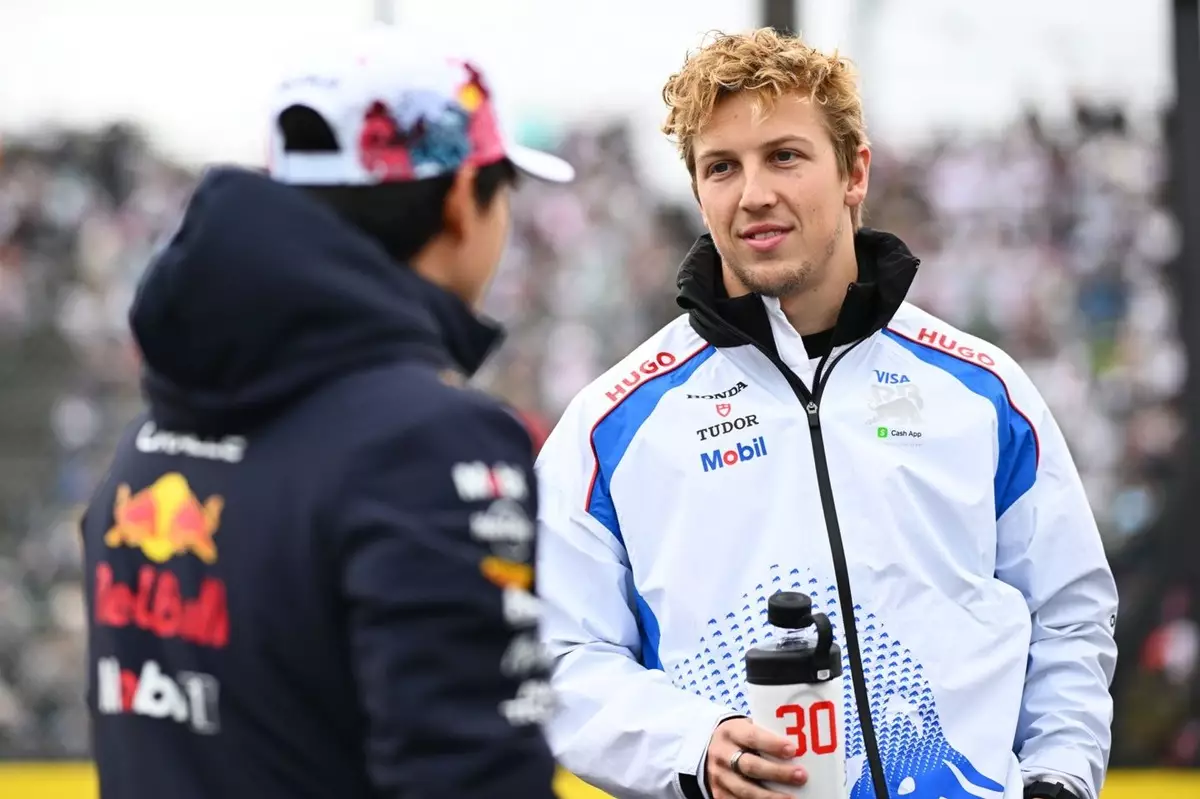The world of Formula 1 is notoriously unforgiving, and the performance of the RB21 illustrates this harsh reality perfectly. This vehicle has been the focal point of analysis, revealing the intricate balance between raw speed and the driver’s ability to harness it. Both Liam Lawson and Yuki Tsunoda have seen the cockpit of the RB21, yet their experiences have diverged sharply. Lawson’s tenure has been marred by inconsistent speed and repeated penalties, while Tsunoda has capitalized on his access to the car with impressive racecraft, even absent the advantages of pre-season testing. This disparity raises critical questions about adaptability and performance under pressure in a sport where even fractions of a second can make or break a career.
Lawson’s Fight Back: A Tale of Recovery
Liam Lawson’s narrative is one of resilience. After being demoted from Red Bull to the Racing Bulls team, he now balances the dual pressures of recovery and competition against standout Isack Hadjar. While Lawson has shown glimpses of his potential—evidenced by his improved closeness to Hadjar over recent races—his inconsistency continues to hinder his progress. At the Saudi Arabian Grand Prix, Lawson’s struggle to overtake Fernando Alonso is emblematic of a larger issue. Despite finishing only 1.4 seconds behind Hadjar, the true merit of that performance is clouded by the circumstances surrounding it; it was less about Lawson’s prowess and more about his counterpart being delayed by other racers. This pattern of momentary brilliance hindered by penalties casts a shadow over Lawson’s upward trajectory.
Moreover, Lawson’s sense of confidence, which he insists remains intact, needs a reality check. Self-reflection is crucial in racing, where mental toughness often dictates success. A driver’s state of mind can heavily influence their performance, and Lawson’s repeated errors may indicate that he has yet to fully grasp the psychological ramifications of his current position. He finds himself at a crossroads where shedding the weight of past failures and looking ahead to tangible results is essential. If he can work through his mental barriers, focusing on finishing in the points rather than getting caught up in rivalries, he may yet secure his place in F1 history.
The Tsunoda Advantage: A Driver in His Element
On the other side of the paddock is Yuki Tsunoda, a driver who embodies the notion of seizing opportunity. Tsunoda’s early performances have shown a knack for extracting the finest capabilities from the RB21. While he might have initially faced challenges adapting to a car that thrives on precision and timing, he is starting to unlock its full potential. His ability to consistently reach qualifying rounds is proof that he is gaining confidence and expertise with the nuances of the car.
Yet, even as Tsunoda flourishes, significant hurdles remain. His journey into the upper echelons of performance is fraught with expectations. The pressure to qualify for top spots and potentially secure victories becomes increasingly palpable. While there’s room for growth, patience is vital. He isn’t just a driver seated in a fast car; he is a developing talent eager to showcase what he can truly do once the car and driver are harmoniously aligned. The key for Tsunoda will be to maintain focus, maximize learning experiences in each race, and apply this knowledge effectively to consistently lower lap times.
The Broader Implications: Navigating the Competitive Landscape
As Lawson and Tsunoda sharpen their skills and navigate their own diverse paths, they represent two sides of a coin that reflects broader themes within Formula 1. The rivalry for the fifth spot in the standings, particularly against teams like Williams, reveals the constant battleground of talent versus opportunity. Both drivers are not just competing against each other but also against the relentless machine of the sport itself, which demands excellence while offering little in terms of second chances.
Their experiences are a reminder that success in F1 is not merely about driving skill; it encompasses the psychological aspect of competition, adaptability, and strategic thinking. Each driver’s evolution—Lawson’s journey of resilience and Tsunoda’s emerging potential—underscores the incredible talent at play in a sport where the margins of success are razor-thin. Their stories highlight that in Formula 1, it isn’t just how fast you race; it’s about how you respond to obstacles, learn from adversity, and ultimately, transform challenges into triumphs.


Leave a Reply